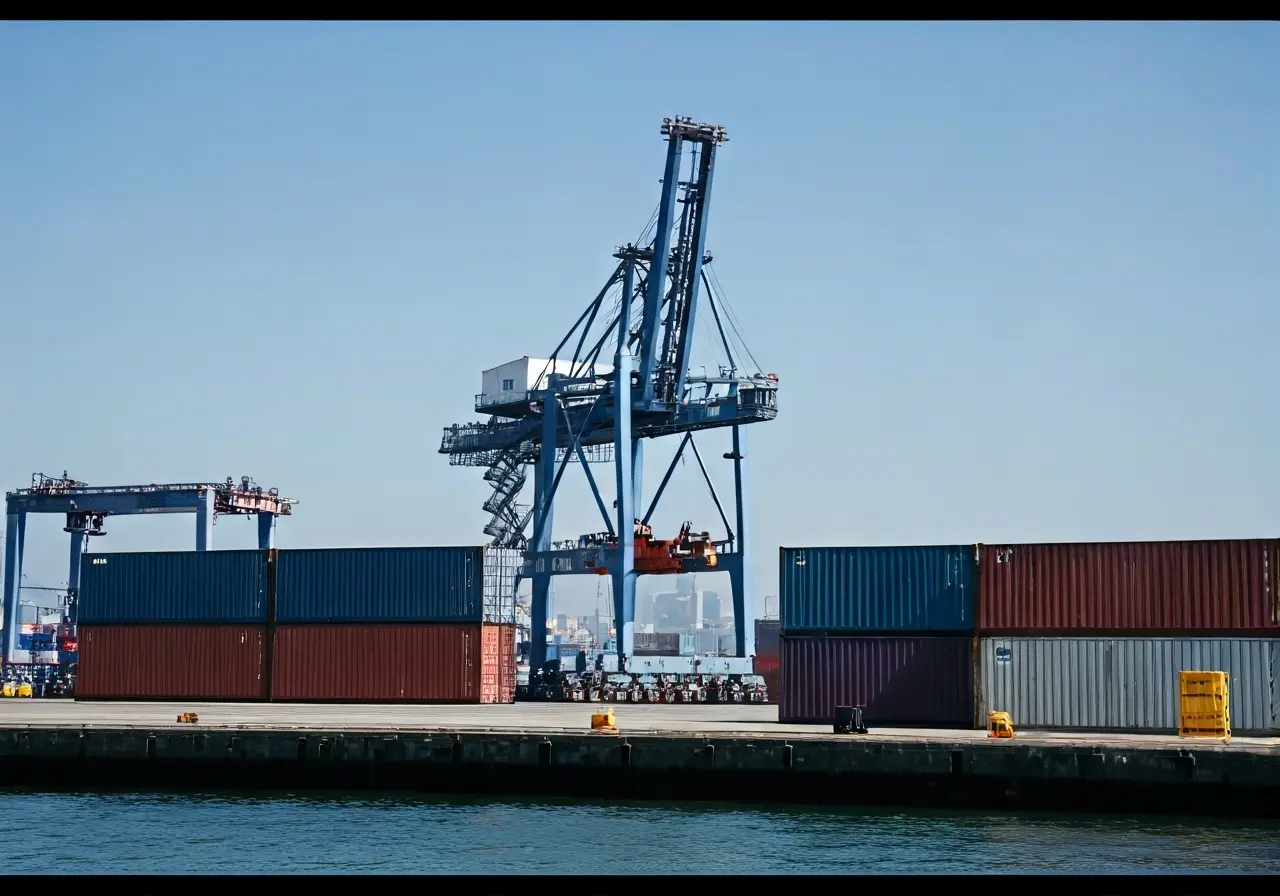10 Crucial Steps in Efficient Container Unloading for Los Angeles Businesses
Unloading containers efficiently is a critical aspect of business operations in the bustling port city of Los Angeles. With so many shipments flowing in, mastering the art of container unloading can save time and resources, ensuring your business thrives. In this blog, we'll explore essential steps that can lead to smoother, more efficient container handling.
1. Understanding the Importance of Preparation
Good preparation is the backbone of efficient container unloading. This involves having a clear plan and understanding the logistics of the shipment beforehand. Properly preparing can help anticipate challenges and streamline the entire unloading process. Knowing what to expect means you're not caught off guard by unexpected issues that could delay operations. For example, consider the dimensions and weight of your cargo to ensure you have the right equipment on hand. Additionally, confirm that all documentation is in order to avoid any legal snags that might disrupt your schedule.
As part of the preparation, coordinate with shipping partners to ensure a seamless transition and maintain open communication channels at all times. This proactive approach helps in clarifying roles and responsibilities, leaving less room for error. Having a pre-unloading checklist can be a handy tool to ensure every step is covered before the container doors swing open.
2. Prioritizing Safety Measures
Ensuring the safety of workers during the unloading process is paramount. Implementing safety protocols and providing training ensures that both personnel and goods remain unharmed throughout the unloading task. Set up a safety-first culture by routinely conducting safety drills and audits to identify potential hazards in unloading areas. Personnel should be equipped with proper safety gear such as helmets, gloves, and steel-toed boots.
Accidents during container unloading not only pose risks to personnel but can also lead to costly delays and damage to goods. Routine maintenance of equipment is crucial to prevent mechanical failures which could result in accidents. By incorporating safety management systems into operations, businesses can proactively address concerns and reduce liabilities.
3. Utilizing Appropriate Equipment
Using the right equipment for unloading containers can significantly increase efficiency. Whether it's forklifts or cranes, having the appropriate tools for the job minimizes downtime and reduces risk of damage. Investing in modern equipment that suits your specific unloading needs can save both time and money in the long run.
Regular equipment checks and maintenance are imperative to ensure that everything is functioning optimally. An unexpected breakdown can halt operations, leading to delays. By keeping equipment up-to-date and in full working order, the likelihood of operational disruptions is minimized. Training your workforce on equipment handling not only improves efficiency but also contributes to a safer working environment.
4. Organizing an Efficient Workforce
Deploying a well-organized team is crucial. Assign specific roles to staff members and ensure clear communication to facilitate a smooth unloading process. Scheduling shifts effectively so that there's always sufficient manpower during peak times can prevent bottlenecks. Having a reliable team that understands their roles can make or break an unloading operation.
Consider employing a team leader whose role is to oversee the entire unloading process, making decisions as necessary and ensuring smooth communication between various departments. This organizational setup not only streamlines operations but also ensures accountability and the timely resolution of any issues that may arise.
5. Monitoring Environmental Conditions
Weather and environmental conditions can impact unloading. Keeping an eye on these factors and adjusting plans accordingly helps in maintaining efficiency and safety. In Los Angeles, where the weather can be unpredictable, having a contingency plan for rain, high winds, or extreme heat is essential. These conditions can not only affect the workforce's ability to unload effectively but can also pose additional safety risks.
Incorporating weather monitoring tools into operations allows businesses to anticipate any changes and adjust unloading schedules to minimize delays. Moreover, this proactive approach ensures the safety of both personnel and goods, safeguarding the integrity of shipments.
6. Implementing Systematic Processes
Creating and adhering to systematic unloading processes ensures consistency and controls the flow. This includes having standardized procedures that can be replicated with each container. By establishing a set routine, businesses can ensure that every team member understands their part and can perform it with minimal supervision.
Detailed process mapping, including flowcharts and checklists, can be valuable tools in visualizing the entire unloading process. These tools help in identifying any potential bottlenecks and offer an opportunity to optimize procedures for better productivity. A systematic approach leads to fewer errors and a faster turnover of containers.
7. Ensuring Accurate Inventory Checks
Thorough inventory checks before and after unloading are essential to track shipments accurately. This helps in identifying discrepancies and maintaining supply chain integrity. Establishing a robust check-in and check-out system can prevent loss, theft, or misplacement of goods.
With the utilization of digital inventory management systems, businesses can maintain a real-time overview of their stock levels. This not only ensures that records are kept accurate but also enhances transparency throughout the supply chain, fostering trust among stakeholders.
8. Facilitating Smooth Transportation
Once the containers are unloaded, organizing smooth transportation to the next destination is important. Ensuring vehicles and logistics are arranged can prevent bottlenecks. Timely coordination with transport logistics partners is crucial in making sure that goods reach their next stop without unnecessary delays.
Efficient scheduling of transport resources ensures that there's minimal waiting time after unloading, keeping the supply chain flowing seamlessly. Employing real-time tracking tools can help in monitoring the journey of goods, providing peace of mind as well as the opportunity to inform clients about their shipment status promptly.
9. Utilizing Technology for Efficiency
Leveraging technology, such as digital tracking and automated systems, can enhance the speed and accuracy of the unloading process. Businesses can greatly benefit from using RFID tags, barcoding, and inventory management software to automate and track the movement of goods seamlessly.
Incorporating automation technology into operations reduces human error and increases efficiency. Automated systems not only speed up processes but also provide valuable data analytics that can be used to further optimize the supply chain and improve future unloading operations.
10. Constantly Reviewing and Improving
Regularly reviewing the unloading process and implementing improvements fosters a culture of efficiency. Gathering feedback and analyzing data is essential for continuous optimization. By encouraging team members to share their experiences, businesses can gain insights into areas that may require improvements.
A culture that embraces change and continuous improvement allows businesses to adapt quickly to any challenges or unexpected changes in the supply chain. Implementing a consistent review system, like lean methodologies, can drive significant improvements in the efficiency of the unloading process and overall operations.

